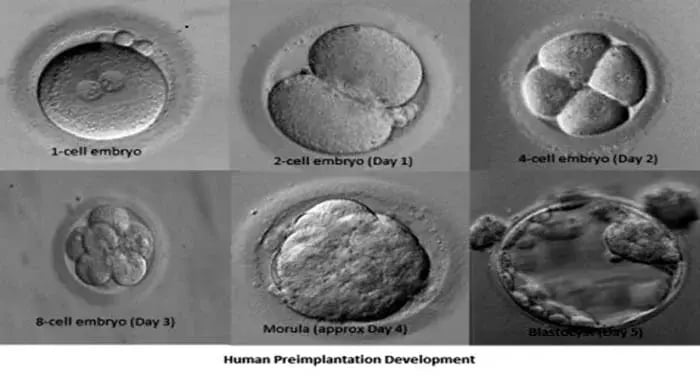In vitro fertilization, or IVF, is one of the most comprehensive fertility treatments. This multi-stage procedure assists throughout every stage of conception to maximize the chance of a successful pregnancy.
To start, the doctors at Pacific Fertility Center stimulate the patient’s ovaries to produce multiple mature follicles. The eggs will then be collected and fertilized in our laboratories where we can monitor embryo growth.
When embryos have reached a certain stage of maturation, they will be transferred directly to the woman’s uterus, where we hope for them to implant and result in pregnancy.
The embryo transfer can be performed on either day 3 or day 5 of embryo growth. Since this is an important stage of IVF treatment, patients understandably want to make sure embryos are transferred at the ideal time.
Here, patients can learn more about what goes into the decision regarding day 3 vs. day 5 embryo transfer for each of our Los Angeles, CA fertility patients.
Embryo Growth
Day 3 and day 5 of embryo growth are only a couple of days apart, but there is a significant difference between these two stages of maturation. Embryos grow rapidly. Each embryo starts as a single cell. That single cell will divide every 12 to 24 hours. So, by the time an embryo has reached day 3 of growth, it should be between four and eight cells.

Just two days later, on day 5, an embryo will consist of between 70 and 100 cells. At this stage of growth, the embryo is referred to as a blastocyst. A blastocyst consists of two types of cells, those that will develop into fetal tissues, and those that will develop into the placenta. Only about one-third of embryos successfully reach the blastocyst stage of development.
When to Schedule your Embryo Transfer
When our doctors schedule embryo transfer, they focus more on the quality of the embryo than its stage of growth. It is our goal to choose the best embryos for transfer, or those that are most likely to implant and develop into a healthy fetus. We look at a number of different factors to determine which embryos are considered the highest quality.
Although embryos consist of just 4 to 8 cells on day 3, doctors are often able to distinguish between the available embryos and choose those that would be most suitable for a transfer procedure. If we can distinguish which embryos are the most ideal, it is beneficial to perform the transfer on day 3. The uterine environment may actually encourage cell growth, making it more likely that the embryo will reach the blastocyst stage of development and implant itself to the uterine wall.
If a patient has multiple embryos that all seem to be developing similarly, it might not be possible to choose which ones are the highest quality. When there is not a clear distinction between embryos, it is best to wait until day 5 to perform embryo transfer. This allows us to further evaluate the embryos and see which reach the blastocyst stage.
Contact Us
If you have been struggling to become pregnant, it may be time to look into fertility treatment. To learn more about IVF and the other services offered at Pacific Fertility Center, contact us today.
Note: This is not intended to be a substitute for professional medical advice, diagnosis or treatment. Information provided is for general educational purposes only and is subject to change without notice. Speak to your doctor directly with any questions you may have regarding a medical condition. Any information contained herein does not replace any care plan as determined by a physician.
You May Also Like
These Stories on In-Vitro Fertilization



.webp)
